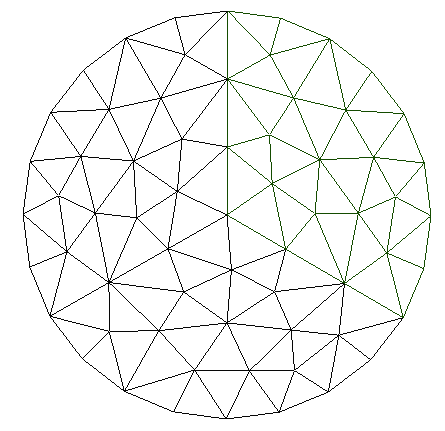8. F modeling#
This modeling is strictly identical to modeling A, except that it is done dynamically (operator DYNA_NON_LINE).
8.1. Characteristics of modeling#


Section \(r=\mathrm{0,02}\text{m}\)
Element POUTRE (6 models):
modeling POU_D_T
modeling POU_D_E
modeling POU_D_TG
modeling POU_D_EM
modeling POU_D_TGM
modeling POU_D_T_GD
Embedding in \(A\): D \(X=\mathrm{DY}=\mathrm{DZ}=\mathrm{DRX}=\mathrm{DRY}=\mathrm{DRZ}=0\)
Loading in \(B\):
\(\mathrm{FX}=1000N\)
\(\mathrm{FY}=1100N\)
\(\mathrm{FZ}=1200N\)
\(\mathrm{MX}=1300\mathrm{N.m}\)
\(\mathrm{MY}=1400\mathrm{N.m}\)
\(\mathrm{MZ}=1500\mathrm{N.m}\)
8.2. Characteristics of the mesh#
A SEG2 element
Section mesh for multi-fiber elements POU_D_EM and POU_D_TGM. The mesh consists of 102 TRIA3 and 64 nodes.

8.3. Tested sizes and results#
For all models, tests ensure that the code is not regressed. They relate to the next move \(Y\) to node \(B\) as well as to ITER_GLOB for the NUME_ORDRE =1.